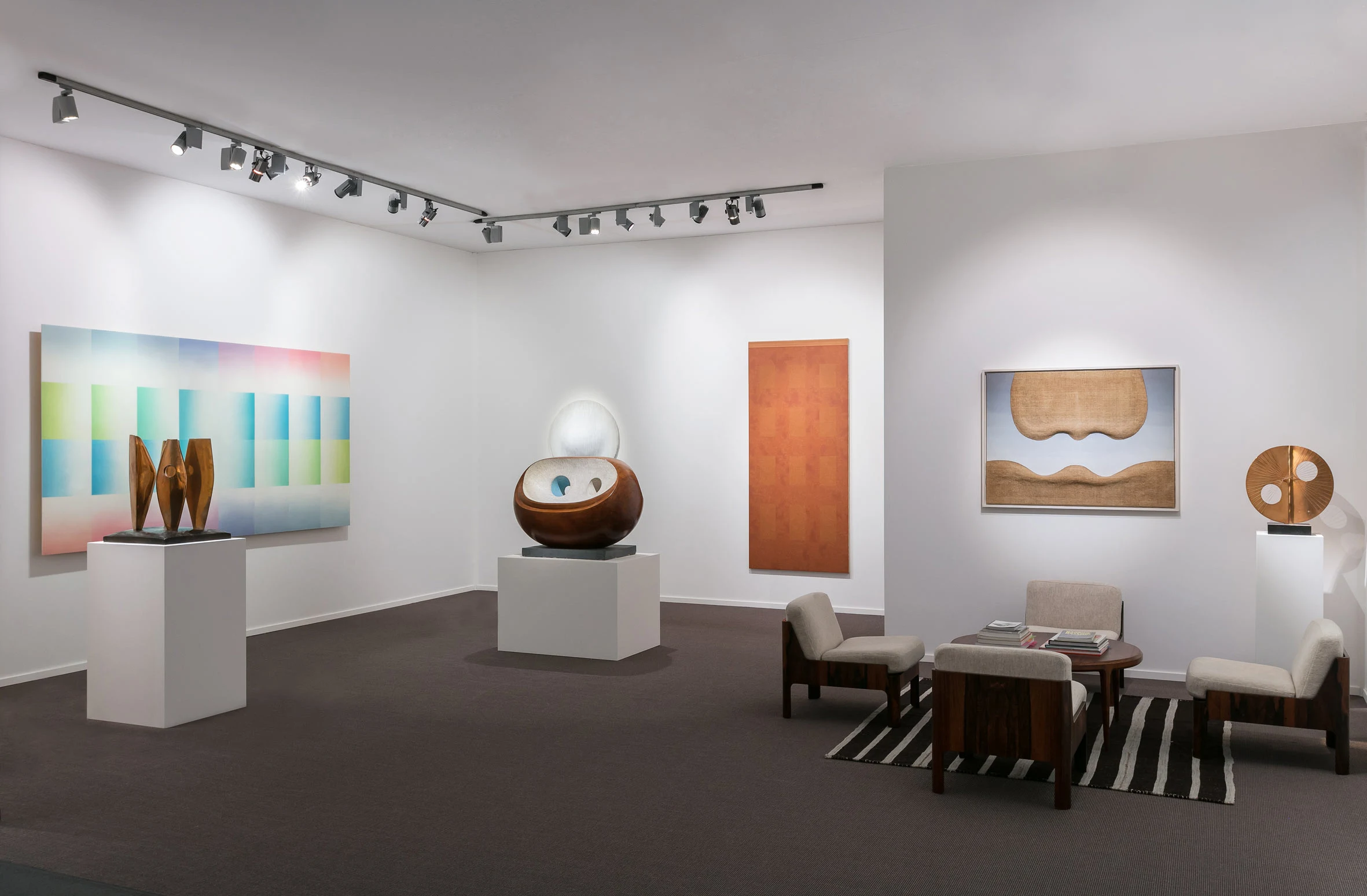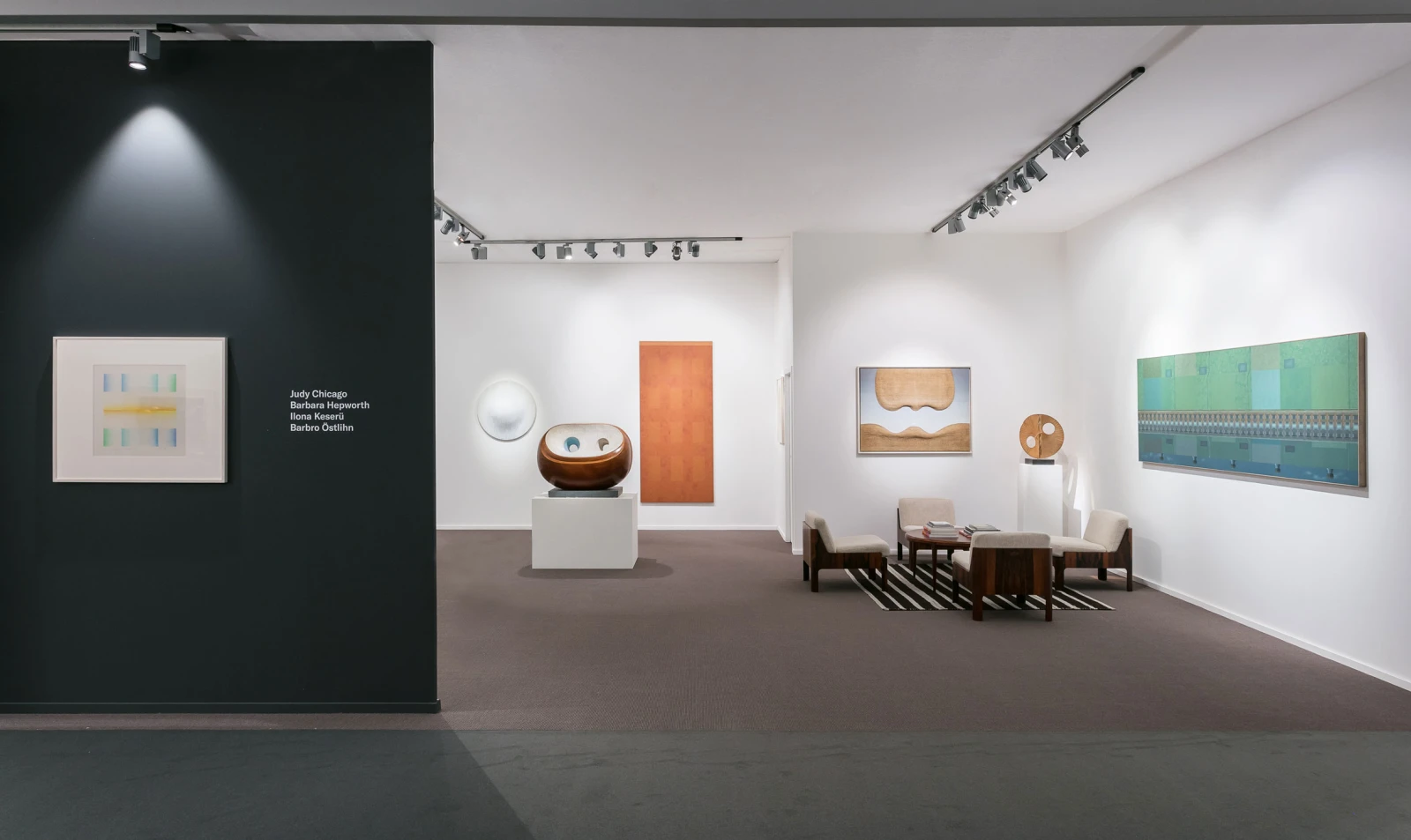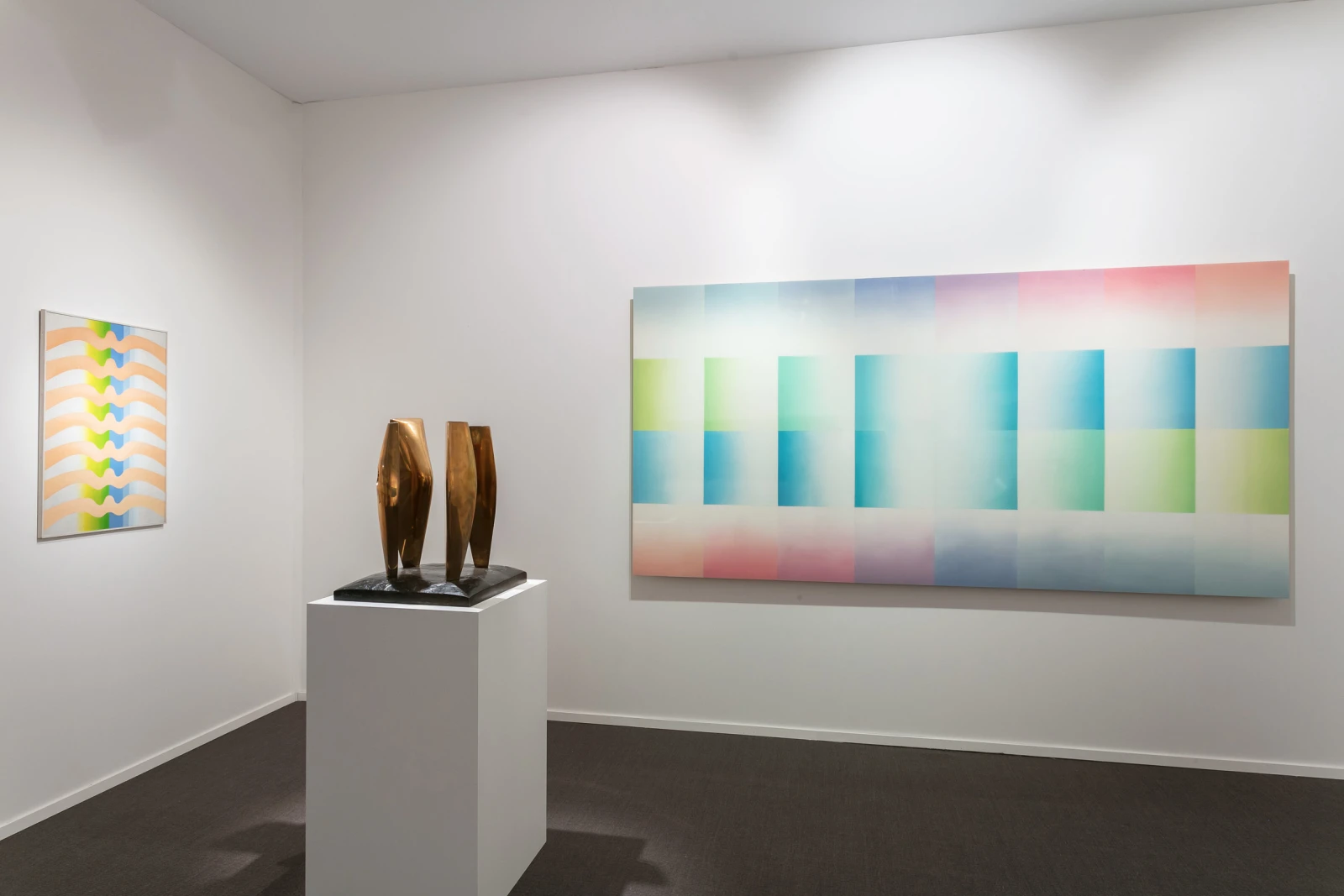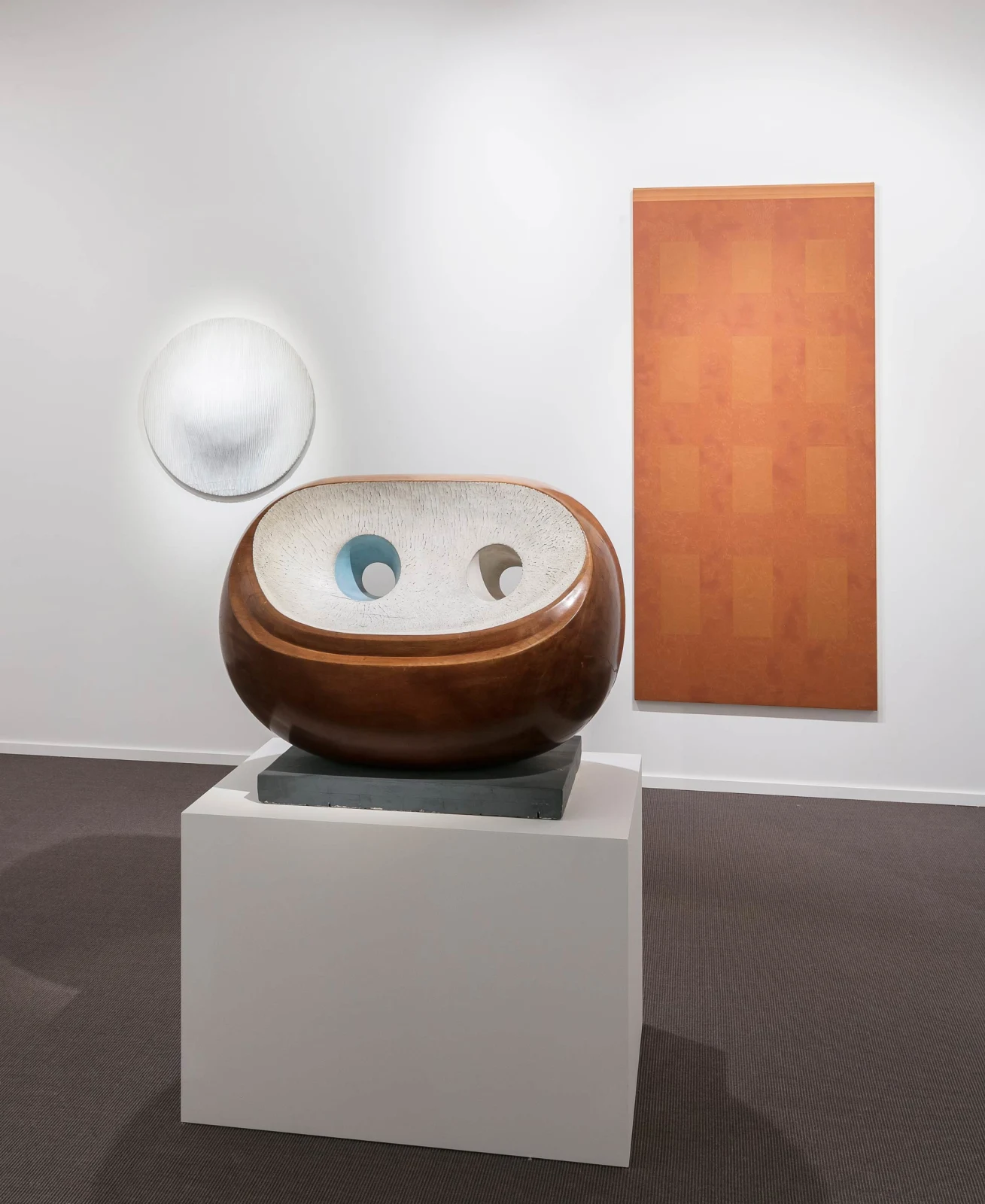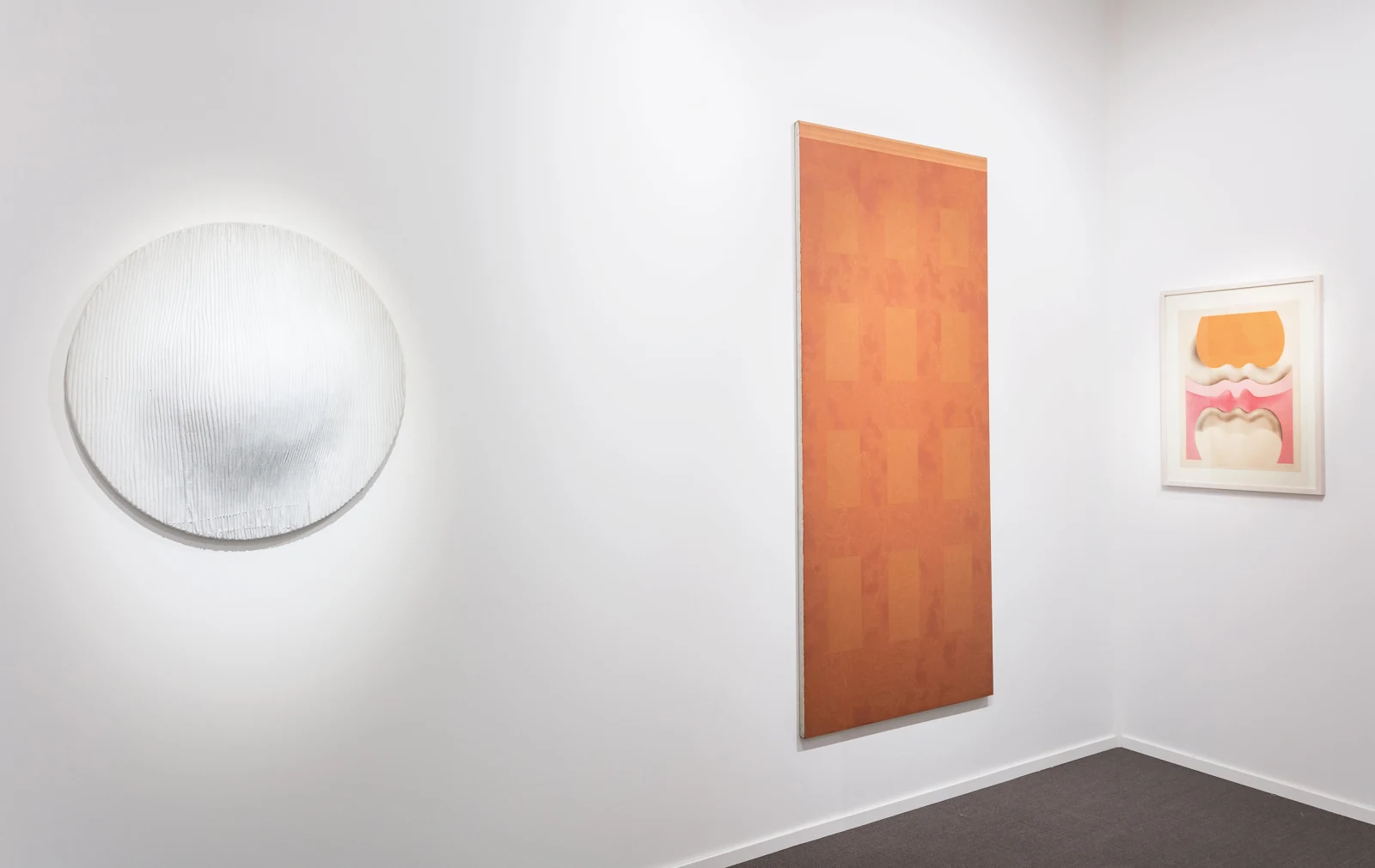Much like Keserü, Barbro Östlihn has yet to receive due attention outside her native country of Sweden, despite being included in the landmark Pop Art exhibition at the Hayward Gallery in 1969. The artist emigrated to New York in the 1960s, and the city became central to her practice. She created paintings of building facades, documenting the changing urban space: "I take long walks in the neighbourhood for my paintings... When the painting is finished I take another walk - to the building - and it is no longer there! It has been demolished while I painted... I feel like an angel of destruction!". These works are nuanced investigations into the effect of the real estate market on urban spaces, and a reappraisal of Östlihn's work offers a opportunity to reassess the position of female artists in the 1960s in Europe and America.
Barbara Hepworth was deeply affected by war, and described a turn towards an ‘intensity of vision' in its aftermath. Her work from this period is strongly connected to her move to St Ives in 1949. She explains: "Sculpture is a three-dimensional projection of primitive feeling: touch, texture, size and scale, hardness and warmth, evocation and compulsion to move, live, and love. Landscape is strong - it has bones and flesh and skin and hair. It has age and history and a principle behind its evolution." Hepworth's work has recently undergone a reappraisal following a major retrospective at Tate in 2015.
In the 1960s and 1970s Judy Chicago made a rich body of minimalist drawings and paintings that until recently remained unknown in comparison to her later, more explicitly feminist work. Chicago used soft palettes of undulating colour that vibrate on the surface in repeating shapes. Although Chicago used industrial methods to make her art - including spray paint and power tools - the work is characterised by a playful use of colour and scale that conveys her interest in sensory responses. These works made significant contributions to the later development of American minimalism.
Judy Chicago, Barbara Hepworth, Ilona Keserü and Barbro Östlihn all pushed and expanded the boundaries of minimalism in the 1960s and 1970s. The powerful and forward-thinking approach of these artists is surmised well by Barbara Hepworth: "I like variety of scale and imagination and materials and I like strong juxtapositions. Something dynamic and not ‘discreet' and ‘ladylike'".
The preview is Wednesday 4 October.
